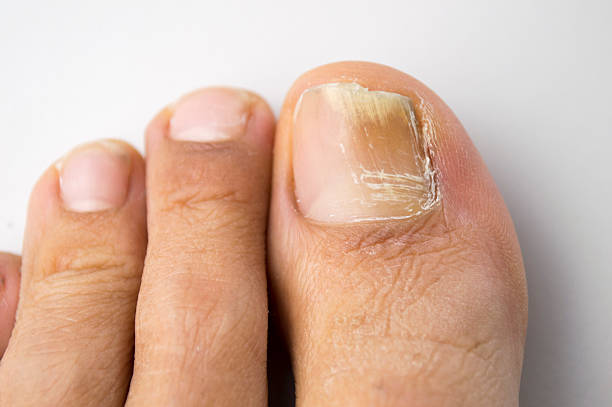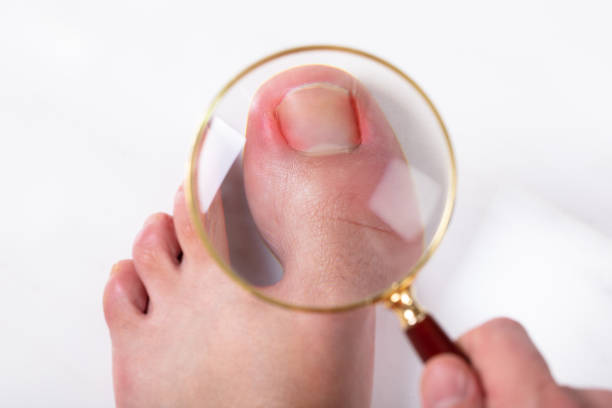What Causes Toenails To Fall Off? What To Do?

Detachable toenails can usually be safely removed, and they usually grow back within a year and a half.
An infection or injury may cause a toenail to separate. To ensure that the toenail grows back properly, fungal infections or injuries may need additional medical care.
How to deal with a toenail that is falling off is covered in this article. We also discuss the causes of toenail separation and when to visit a doctor.
Table of Contents
What Causes Toenails to Fall Off?
Injury
Your toenail may fall off as a result of simple foot injuries. Your toenail can get hurt in a variety of situations, including auto accidents, sports, and dropping something on your foot.
It may appear black or purple underneath your toenail if it has been damaged. A subungual hematoma, which causes blood to gather under your injured toenail, is to blame for this. Nail separation from the nail bed is possible as blood accumulates beneath the nail. Your toenail won’t always fall off completely within a few weeks.
If your toenail is more than 25% covered by the subungual hematoma, call your doctor. Your doctor may make a tiny hole in your toenail with a heated needle or wire if you experience throbbing or severe pain close to the hematoma.
Otherwise, you can treat your injured toe at home by:
• soaking it in cold water for 20 minutes
• elevating it
• clipping any sharp or jagged edges of the remaining nail
• cleaning any exposed part of your nail bed and applying an antibiotic ointment
• applying a fresh bandage daily for the next 7 to 10 days, or until the skin hardens
• taking nonsteroidal anti-inflammatory drugs (NSAIDs), such as ibuprofen (Advil, Motrin), to help with the pain
The time it takes for a toenail to fully regrow depends on which toenail was removed and can range from six months to two years. Wearing comfortable shoes and keeping the rest of your toenails neatly trimmed will help you avoid any further injuries.
Fungus
The toenail on your foot may eventually fall off due to fungi that develop between the nail bed and the toenail.
Symptoms of a fungal toenail infection include:
• noticeably thicker toenails
• white or yellowish-brown discoloration on your toenails
• dry, brittle, or ragged toenails
• foul smell coming from toes
• unusual toenail shape
A fungal infection of the toenail can develop if you have an athlete’s foot. Due to poor blood flow in the feet caused by diabetes, you are also more likely to develop a fungal infection in your toenail.
Your nails get drier as you age. They might also be more prone to cracking as a result, which would let the fungus grow in your nail bed.
Depending on how bad the infection is, treating fungus in the toenails can be challenging. In minor cases, the infection usually goes away on its own. Any infection in your feet, regardless of the type, should be reported to your doctor if you have diabetes because poor circulation can exacerbate the issue.
Antifungal medications applied topically or orally are frequently used to treat fungal toenail infections. Your doctor might advise both depending on the severity of your infection. When compared to over-the-counter topical treatments, oral antifungal medications are typically much more effective. They lessen the chance that your brand-new toenail will become infected as well.
For up to 12 weeks, you might have to take medication. Until your new toenail has fully grown in, you won’t notice any changes. Tell your doctor about any unusual side effects you experience while taking oral antifungal medications, such as a rash or fever.
The treatment of a fungal toenail infection can also be attempted at home. Rarely, you might require surgery to have the affected toenail permanently removed.
You can prevent fungal toenail infections by:
• keeping your feet dry
• changing your socks often
• wearing breathable shoes
• keeping your nails neatly trimmed
• disinfecting your nail clippers
• wearing shoes in damp communal areas, such as spas or locker rooms

Psoriasis
Skin cells accumulate as a result of the autoimmune condition psoriasis. While it frequently affects the skin, it can also harm toenails. Many mild cases of nail psoriasis don’t bother people much. Toenail loss can occasionally occur due to a buildup of skin cells in the nail bed.
Symptoms of psoriasis on your toenail include:
• pitting
• thickening
• unusual nail shape
• yellow or brown color
• chalky buildup under the nail
A sharp object should not be used to remove extra skin from under your nail as this increases the risk of your toenail coming off. Instead, give your feet a warm soak and use a file to round the edges of the remaining toenail. Moisturizing your feet and toenails can also be beneficial. These moisturizers are available in a wide variety.
To be applied to your cuticle and toenail, topical steroids may be prescribed by your doctor. They might even recommend phototherapy. Your affected toes will be exposed to UV light as part of this treatment. Rarely, the remainder of your toenail may need to be removed.
Nail fungus and nail psoriasis can have very similar appearances. Here’s how to distinguish between them.
Are There Warning Signs before the Toenail Will Fall Off?
You’ll probably feel some pain if your toenail is hurt. Additionally, there might be bleeding coming from or under the nail. You might observe that your toenail is loose and discolored. If you are at risk of losing a toenail due to a fungal infection you will notice symptoms consistent with fungal toenail infections including:
• Yellow, brown, or white discoloration
• Thickening of the nail
• Discharge
• Odor
• And in some cases, swelling and pain

What to Do After Your Toenail Falls Off?
Whatever the reason for your toenail falling off, there are a few things you can do right away to prevent further issues.
Here are some quick tips:
• Don’t attempt to remove the remaining toenail if only a portion of it has fallen off.
• Use nail clippers to carefully remove the detached portion of your toenail if it is still joined to your toe in order to prevent it from catching on your socks or other items of clothing. If you don’t feel comfortable doing it on your own, your doctor can assist you.
• To remove any jagged or sharp edges, use a nail file.
• Apply an antibiotic cream after cleaning your toe and making sure all debris is gone.
• Put a bandage over the area where your toenail broke off.
• If your toenail completely falls off or the area around it won’t stop bleeding, get help right away.
When to See a Doctor?
A doctor should be consulted for the proper course of treatment if a fungus infection does not go away on its own.
If a person has an injury that worries them or suspects an infection in or around the nail, they should consult a doctor.
In cases where psoriasis is suspected, a doctor may be able to offer guidance on the best course of action for treating symptoms in the skin and nails.
Summary: Take Precautions
A toenail falling off can be painful and annoying, even though it usually does not pose a serious medical risk. A damaged or detached toenail may occasionally become infected or signal a more serious medical condition.
A person can take precautions at home to help keep the nail bed clean and safe. Medical attention might be necessary if someone suspects they have an infection.
Tags: Detached toenails, Toenails